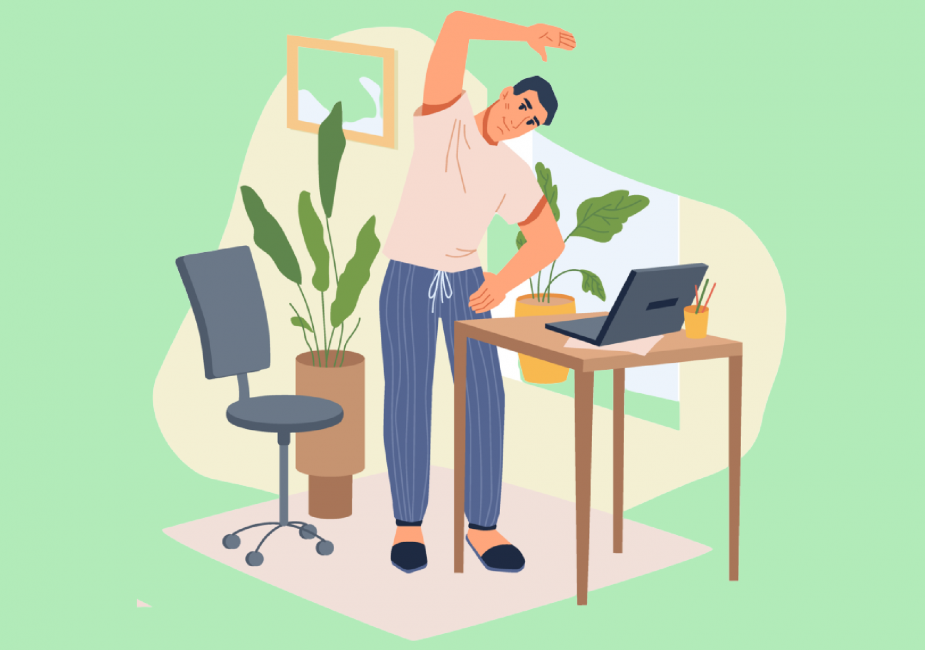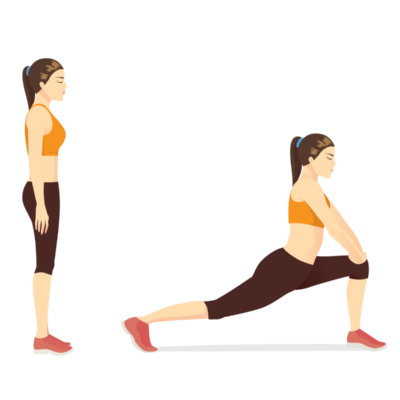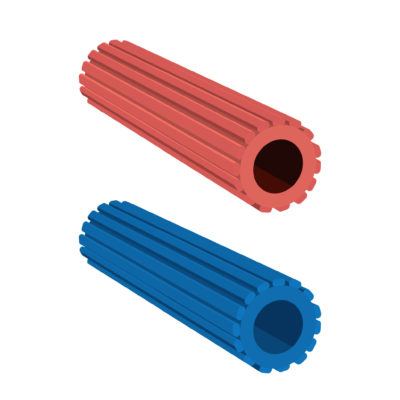You may have heard the saying “sitting is the new smoking.” For many of us with desk jobs and work from home lifestyles, we may feel muscular stiffness, joint dysfunction and overall discomfort in our movement patterns as a result.
In the fitness field we call them muscular imbalances, and the most common imbalances are in the hip complex and the shoulder complex (also known as Anterior Pelvic Tilt and Upper Crossed Syndrome).
So what should we do?!
There are a variety of stretches and exercises that can assist with these imbalances and allow us to move more efficiently, freely and comfortably.
Hip Complex (Anterior Pelvic Tilt)
Anterior pelvic tilt is what happens when your hips are in a constant state of flexion (i.e. sitting all day). This causes tight hip flexors (the muscles that connect the hip & the spine to the legs), a weakened core and trunk, a tight lower back, and weakened glutes. One of the more common symptoms is lower back pain.
Stretches
Stretching your hip flexors should be your number one priority when trying to address movement patterns related to anterior pelvic tilt.
- Start in a low lunge with your right foot forward, right knee directly over ankle for support and stabilization, left knee on the ground.
- From here push both hips forward and squeeze your opposite glute (left glute complex). You will feel your hip flexor on your left “pulling” and opening up.
- Hold this for 30-60 seconds and swap sides.
This is a great move for everyone, even if you don’t have a desk job. Stretching your lower back is also of great importance to ensure proper movement mechanics.
There are lots of differing lower back stretches and depending on your flexibility and experience, you can adjust to suit your needs. A simple but effective one is “child’s pose”- let your lower back round and relax. “Cat-cow stretch” is another great one, where you are rounding through your spine like a cat then dropping your belly toward the ground like a cow.
Strengthen
Strengthening your core / trunk and your glute muscles are extremely important to address the pelvic tilt.
- Try the Standard plank: This is great option for any level because it is easily progressed or regressed to fit where you are at today. It also does not engage your hip flexors as much as a crunch would.
- Moving on to strengthening your glute muscles. A great strengthening exercise is a glute bridge for a beginner or a hip thrust for someone more advanced. This engages your glutes as your primary muscle group but also uses your core (double win!).
Shoulder Complex (Upper Crossed Syndrome)
Upper crossed syndrome is what happens when we are constantly in a state of having our arms forward and neck poking forward. It is very common nowadays since we all use computers / phones / technology and are looking down. This causes tight chest muscles, upper trapezius, and neck muscles as well as weakened lower traps and neck flexors.
Stretches
Here we need to stretch your chest and pectoral muscles. Foam rolling is a safe and effective way to stretch.
- Simply lying on it and opening up your arms to fall to the ground.
- Lie with your neck on one end of the foam roller and lie your spine along the foam roller.
- Relax into this motion and let your body reap the benefits of this stretch.
We also need to stretch your upper traps and neck muscles. Simple stretches like pulling your neck down to one side will stretch your neck as well as pulling your neck down and forward slightly will target these muscles.
Another option is massage therapy or your self-myofascial release tools like a lacrosse ball for these spots.
Strengthen
We need to strengthen the lower part of your back in order to “pull” your neck back and down.
- A great exercise here is a TRX row or a cable row. Using the lower trapezius will help the correction of this movement. Using either of these exercises ensure that your neck is in alignment with your spine and not “poking forward.”
Regardless of where you’re at today or your preferred way to exercise, rest assured any type of movement helps us to feel better and more energized.
Getting out for a walk, working out at the gym, or spending time playing sports is a great way to clear your mental state and get the positive endorphins flowing through your body!










